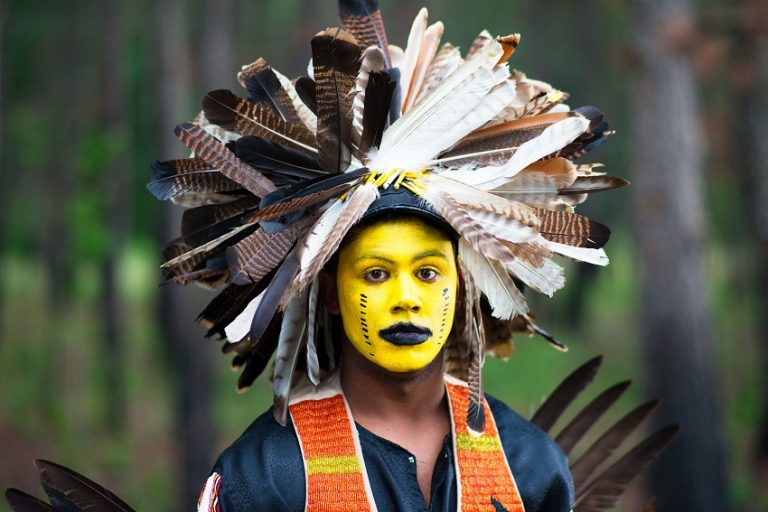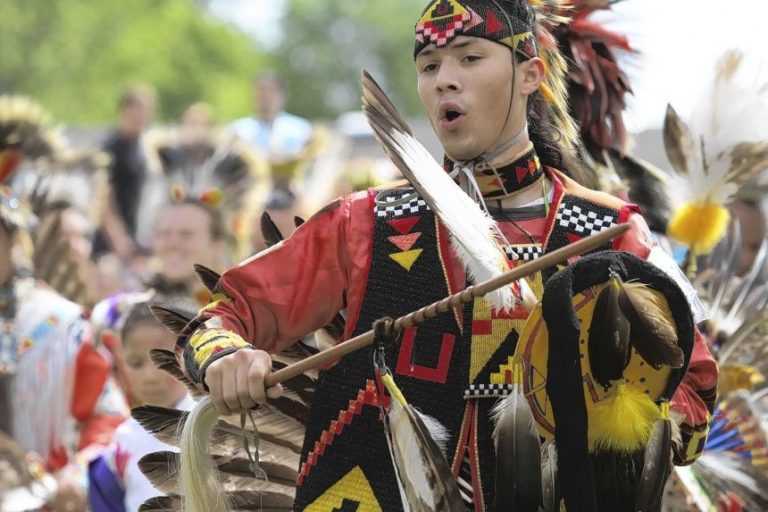
Echoes of Resilience: The Enduring Cultural Practices of the Lumbee Tribe
In the heart of southeastern North Carolina, nestled along the dark, tannin-stained waters of the Lumber River, lies a vibrant and resilient community known as the Lumbee Tribe. With a population exceeding 60,000, they are the largest Native American tribe east of the Mississippi River, yet their unique journey of self-determination and cultural preservation often goes unrecognized on a national scale. Despite a history marked by the ongoing struggle for full federal acknowledgment – a fight that has spanned generations – the Lumbee people have steadfastly maintained a rich tapestry of cultural practices that define their identity, strengthen their bonds, and honor their ancestors.
Their story is one of profound connection to the land, an unwavering commitment to kinship, and the enduring power of tradition passed down through oral histories and lived experiences. For the Lumbee, culture is not a relic of the past, but a living, breathing entity that shapes their present and guides their future.

The Bedrock of Belonging: Community and Kinship
At the very core of Lumbee culture is an expansive and deeply interwoven sense of family and community. Unlike many Western societies that emphasize the nuclear family, Lumbee kinship extends outward, encompassing aunts, uncles, cousins, and neighbors in a vast network of mutual support and shared responsibility. This communal spirit is evident in every facet of life, from Sunday dinners to times of crisis.
"Our family extends beyond just blood; it’s the whole community," explains Dr. Arlinda Locklear, a Lumbee attorney and scholar who has long advocated for the tribe. "When someone is in need, the entire community rallies. It’s an unspoken understanding that we are all responsible for one another." This collective identity fosters a powerful sense of belonging and resilience, acting as a bulwark against external pressures and historical adversities. Gatherings, whether formal or informal, are central to this ethos, providing opportunities for storytelling, shared meals, and the reinforcement of social ties that have been the backbone of Lumbee survival for centuries.
Sustenance and Celebration: The Heart of Lumbee Foodways
Food plays a pivotal role in Lumbee cultural expression, serving not only as sustenance but as a powerful medium for connection, celebration, and the preservation of heritage. Lumbee cuisine, distinct yet drawing on Southern and Native American influences, is a testament to the resourcefulness and ingenuity of a people deeply tied to the land.
One cannot speak of Lumbee food without mentioning the iconic chicken pastry. This dish, unlike any typical chicken pot pie, features a rich, savory chicken stew covered with delicate, hand-rolled pastry squares that are simmered directly in the broth. It is a staple at family reunions, church events, and the annual Lumbee Homecoming. "Chicken pastry isn’t just food; it’s comfort, it’s memory, it’s love," says local cook and elder, Martha Hunt. "It reminds us of our grandmothers, of gathering around the table, of being home."
Other culinary mainstays include collard greens slow-cooked with smoked ham hocks, sweet potato pie, and cornbread – often a pan-fried version known as "hoe cakes" or a baked version made with buttermilk. These dishes, simple in their ingredients but rich in flavor and tradition, embody the Lumbee way of life: practical, communal, and deeply rooted in the agricultural bounty of their ancestral lands. The act of preparing and sharing these meals reinforces cultural identity and passes down culinary traditions from one generation to the next.
The Sacred Ground: Connection to Land and River

The Lumbee people’s connection to their ancestral lands in Robeson County and the Lumber River (once known as Drowning Creek) is profound and spiritual. This land is not merely territory; it is the repository of their history, the source of their sustenance, and the wellspring of their identity. Generations have lived off its bounty, farming, hunting, and fishing, instilling a deep respect for the natural world.
The Lumber River, in particular, holds immense significance. It is a place of recreation, reflection, and spiritual renewal. Its banks have witnessed countless Lumbee lives unfold, from childhood adventures to solemn ceremonies. This intimate relationship with the environment has shaped many cultural practices, including a sustainable approach to resource management and an understanding of the interconnectedness of all living things. "The river is our lifeline, our history flows through it," states a local environmental advocate. "It reminds us of where we come from and our responsibility to protect it for those who will come after us." This reverence for the land is subtly woven into their worldview, influencing their stories, songs, and daily routines.
Rhythms of Life: Powwows and Dance
The most visible and vibrant expression of Lumbee culture for many outsiders is the annual Lumbee Homecoming Powwow, held every July. This multi-day event is a powerful convergence of tradition, celebration, and community pride, drawing thousands of Lumbee people from across the nation and beyond, as well as visitors eager to learn about their heritage.
The powwow is a sensory feast: the rhythmic throb of the drum groups, the vibrant colors of the dancers’ regalia, and the air filled with the aroma of traditional foods. Dancers, adorned in meticulously crafted outfits unique to their individual and family histories, move with grace and power in various styles, including traditional, fancy, jingle, and grass dances. Each dance carries deep cultural and spiritual significance, often telling stories or honoring ancestors.
"When we dance, we’re not just moving our bodies," explains a young Lumbee dancer, adjusting his intricate bustles. "We’re praying, we’re honoring our ancestors, we’re connecting to something much bigger than ourselves. It’s a way to feel truly Lumbee, truly alive." The drumming, considered the heartbeat of the Native American people, provides the pulse for the dancers and the collective spirit of the gathering. Beyond the public spectacle, the powwow is a crucial space for intergenerational learning, where elders share knowledge with youth, and cultural practices are reinforced and revitalized.
Passing the Torch: Oral Traditions and Education
For a people whose history was largely unwritten by dominant society, oral tradition has been the primary vehicle for transmitting knowledge, values, and identity across generations. Storytelling, often passed down from elders around kitchen tables or on front porches, serves as a powerful pedagogical tool, teaching history, morality, and cultural norms. These narratives often feature trickster figures, moral lessons, and accounts of Lumbee resilience in the face of adversity.
While the Lumbee language, like many Indigenous languages, has faced significant decline due to historical assimilation policies, there are ongoing efforts to preserve and revitalize linguistic elements. Cultural institutions and educational initiatives within the Lumbee community are increasingly focused on teaching youth about their heritage. The Lumbee Tribe of North Carolina operates a cultural center, and local schools in Robeson County integrate Lumbee history and culture into their curricula, ensuring that the next generation understands and cherishes their unique identity. This commitment to education is a vital part of their cultural preservation strategy, recognizing that the future of their traditions lies in the hands of their youth.
Enduring Resilience in the Face of Adversity
The Lumbee Tribe’s cultural practices are not merely expressions of identity; they are testaments to an extraordinary resilience forged over centuries. Despite facing systemic discrimination, land dispossession, and the persistent denial of full federal recognition – which would unlock crucial resources and sovereignty – the Lumbee people have steadfastly maintained their distinct identity. This "unconquered" spirit, as many Lumbee describe it, is deeply embedded in their cultural fabric.
Their journey is a powerful reminder that culture is a dynamic force, capable of adapting and evolving while holding true to its core values. From the shared plates of chicken pastry to the rhythmic beats of the powwow drum, from the quiet wisdom of elders to the vibrant energy of youth, the Lumbee people continue to live their culture every day. It is a heritage of strength, community, and an enduring connection to the land and each other, ensuring that the echoes of their resilience will continue to resonate for generations to come. The Lumbee story is a living testament to the power of cultural pride in the face of adversity, a beacon of hope for all who seek to preserve their unique heritage in a rapidly changing world.


